Dance without limitations
July 7, 2011
There’s more than one way to cut a rug. Dancers of all ages–with and without disabilities–star in barrier-breaking contemporary routines this Saturday at the Ford Amphitheatre in the latest installment of the “Big!World!Fun!” family series.
AXIS Dance Company began producing “physically integrated” dance in 1987, and has since staged routines across the United States and worldwide, featuring dancers with prosthetics and in wheelchairs, as well as those without disabilities. Over the years it has been awarded multiple Isadora Duncan Dance Awards (Izzies), and has been featured in local and national broadcasts.
The Big!World!Fun! series, sponsored in part by Supervisor Zev Yaroslavsky, brings music, dancing and theatre to families in eight morning performances that are free for kids. The Ford’s 2011 programming is produced by the Los Angeles County Arts Commission and aims to promote diverse artistic performances to diverse audiences.
See AXIS do its thing this Saturday, July 9, at 10:00 a.m., or come at 9:00 a.m. for pre-show dance and exercise led by Family Dance Jam. The Ford is located at 2580 Cahuenga Blvd. East–directions are available online. Adult tickets are just $5, and kids under 12 get in for free. Reservations are required, so make them online or by calling (323) 461-3673. Parking costs $1.
Posted 7/7/11
All of WeHo’s a stage
July 7, 2011

Merry wanderers of the night, make your way to Plummer Park for an adaptation of Will Shakespeare’s As You Like It. This Saturday, July 9, marks the first in a series of free outdoor summer performances of the play, sponsored by the City of West Hollywood. They will continue on Saturdays and Sundays until August 14; the full schedule is on the city’s website.
This 90-minute musical adaptation of the Bard’s classic comedy was written by the Tony Award-nominated Tony Tanner, and is staged by the Classical Theatre Lab, which provides an outlet for professional actors to perform works by history’s greatest writers.
Seating is limited, so reserve your spot by calling (323) 960-5691 or TTD (323) 848-6496. Plummer Park is located at 7377 Santa Monica Boulevard. This weekend’s shows begin at 6 p.m. Get there with Metro and skip the search for parking.
Posted 7/7/11
Dinosaurs roar back to life at exhibit
July 7, 2011
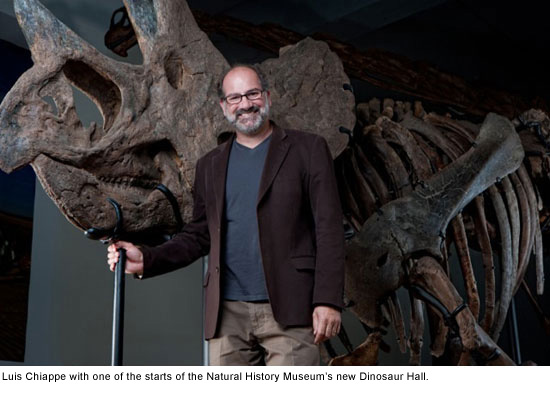 Their body temperatures were almost the same as a human’s. Some had plumage and the ability to make noises. Some had footprints and tail shapes about which we were wrong until recently.
Their body temperatures were almost the same as a human’s. Some had plumage and the ability to make noises. Some had footprints and tail shapes about which we were wrong until recently.
We’re fairly sure about what killed them (fallout from a meteor crash) and what they evolved into. (Hint: It has feathers). But much of their 230 million years on the planet remains a mystery.
You could fill an encyclopedia with what scientists are still discovering about dinosaurs. But for the past several years, Luis Chiappe, director of the Dinosaur Institute at the Los Angeles County Natural History Museum, has had something even bigger in mind.
This month, a newly renovated, 14,000-square-foot Dinosaur Hall will open, doubling the dinosaur display space at the museum. The permanent exhibition, which opens to members July 10 and to the general public July 16, will feature some 20 new major mountings from the museum’s expanded collection—from an extraordinary trio of young Tyrannosaurus rex skeletons to the smallest dinosaur ever discovered in North America. It also will reflect the ways in which technology has revolutionized paleontological research.
“This is not a chronological journey through time, and this is not setting animals in dioramas,” says Chiappe, who led much of the fieldwork responsible for the exhibit and curated it as an invitation to visitors to regard the towering fossils with a scientific eye.
“This is, ‘How do we know what we know? How do we reconstruct the life and, in the end, the death of these animals?’ This is an up-to-date, state-of-the-art understanding of the lives of the dinosaurs.”
In other words, this is not your father’s dinosaur museum. The new Dinosaur Hall will fill two rooms with nearly 300 specimens collected over nearly a century, with at least a third of the major pieces never before having been shown to the general public.
Displays will include background on how technological advances such as CT scans and particle accelerators have, for example, helped scientists understand the internal organs of dinosaurs and deduce the original colors of their skin and feathers. Many of the pieces have yielded important new discoveries and resulted in published research.
“Some amazing things were unearthed in the course of doing this hall,” says John A. Long, vice president of research and collections at the museum, which operates not just as a showcase, but also as a major research institution.
And, Long adds, because of improvements in conservation methods, “you can see the bones better—they’re better prepared.”
Among the showpieces will be the dramatic grouping of young T. rex skeletons—baby, early adolescent and teenager—that, taken together, make up the world’s only depiction of the famous carnivore’s growth pattern.
Also featured will be one of the most anatomically accurate depictions to date of the massive Triceratops, culled from several finds that included a completely articulated set of front leg, or “arm”, bones—a rarity that has contributed a fresh understanding of how the massive creature walked and lived.
Both the Triceratops bones and the oldest T. rex—a gangly, 33½-foot-tall teenager nicknamed “Thomas” that boasts one of the most complete skeletons in existence—were collected by Chiappe and his crews during field work in Wyoming and Montana. But the displays also include the museum’s very first specimen (a lower jaw from a Canadian duck-billed dinosaur that was collected in 1919), and a number of significant finds collected for the museum by the late Harley Garbani, a self-taught fossil hunter from Hemet who died at 88 in April.
”He toured the galleries a couple of months ago, but it would have been wonderful if he could have been around for the opening,” Chiappe says wistfully.
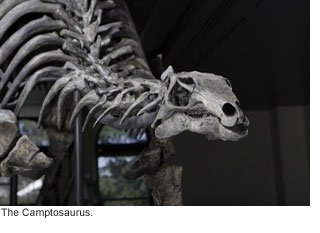 Additionally, there are killer sea reptiles known as Mosasaurs, who, upon closer inspection by Chiappe and his colleagues were recently found to have had flukes, not long, tapering tails as scientists once imagined. Chiappe and Long say the information was there all along, but no one noticed it because the fossils had been in storage since they were found in Kansas and acquired during the 1960s.
Additionally, there are killer sea reptiles known as Mosasaurs, who, upon closer inspection by Chiappe and his colleagues were recently found to have had flukes, not long, tapering tails as scientists once imagined. Chiappe and Long say the information was there all along, but no one noticed it because the fossils had been in storage since they were found in Kansas and acquired during the 1960s.
“We have one of the best specimens in the world,” Long says, “and it had been locked up until we dusted it off and prepared it for this gallery. In doing so, we found skin and pigments and bronchial tubes and a wealth of new information, including a big tail fluke, like a tuna or a shark, that changes what we know about the way they swam and hunted.” (Stay tuned for further developments on this front. Museum sources say another blockbuster announcement about this part of the exhibit could come within the next few weeks.)
The Dinosaur Hall is part of an ambitious plan to expand and modernize the Natural History Museum, which celebrates its centennial in 2013. A groundbreaking “Age of Mammals” exhibition opened last year; a new California history hall and several other permanent exhibitions, including a 63-foot-long fin whale specimen, are anticipated before the end of next year.
Chiappe, an internationally renowned paleontologist who was recruited 12 years ago from New York’s American Museum of Natural History to supervise Los Angeles’ dinosaur collection, says the permanent exhibit had been under consideration almost from the moment of his arrival, “but we’ve worked intensively in the last five or six years.”
A native of Argentina, Chiappe says he grew up as “a city boy” in Buenos Aires, but learned from his grandfather to love the outdoors.
“We’d go hunting and fishing,” he recalls. “For a while, I wanted to be a biologist, and I went to university with that in mind. But then I met a classmate who was into paleontology, and we started going out on weekends, collecting Ice Age fossils, like saber-toothed cats and mastodons, amazing animals that don’t exist anymore. I thought it was incredibly cool.”
Chiappe has since done extensive fieldwork and research, particularly into the evolutionary links between dinosaurs and their modern counterparts, birds. The Dinosaur Hall also will address those connections.
“We will have a taxidermy pelican in a glass case, and a swan, an ostrich and a pelican skeleton,” he says. We will have a mural featuring emus, and we’ll talk about hummingbirds as dinosaurs—the idea that dinosaurs are in your backyard, and if you want to see one today, they’re right outside their window. You only need to look.”
Chiappe’s favorite displays? Well, he says, his favorite dinosaur is T. rex, and his 4 1/2-year-old son’s is Triceratops. But No. 1 on his Dinosaur Hall hit parade is the “Fossil Wall,” a 43-foot display case with nearly 100 specimens, from dinosaur bones and droppings to dinosaur eggs and skin.
“It’s beautiful from an aesthetic point of view,” he says, “and it expresses the wealth of our collection—it’s really an art installation using dinosaur body parts.”
What does he hope the public will glean from the museum’s scientific take on his favorite subject?
“I’d like people to understand that they were living animals,” he says. “We know them as skeletons. We see their bones in museums. But they were alive once. They suffered and had illnesses and diseases, and found mates and reproduced and did everything we associate with living animals, whether they are our pets or ourselves.”
Long, a fellow paleontologist who came to the museum two years ago from Australia, calls the new Dinosaur Hall “one of the most exciting dinosaur exhibits in the world,” and says it has been “a dream come true to be part of a team presenting a gallery like this.”
But, he adds, “this really is Luis’ baby.”
“It’s obviously once in a lifetime that a curator is essentially setting the course on the steering wheel for a major exhibit like this,” agrees Chiappe. “I know I won’t have another opportunity like this.”
Posted 7/7/11
Foster kids get secret admirer’s gift
July 6, 2011
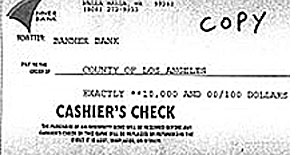 In an act of generosity so surprising that it generated national headlines, a mystery donor last month gave $10,000 to Los Angeles County, asking only that it be put to “good use.” This week, the Board of Supervisors did just that, voting to use the money for the benefit of the county’s foster children.
In an act of generosity so surprising that it generated national headlines, a mystery donor last month gave $10,000 to Los Angeles County, asking only that it be put to “good use.” This week, the Board of Supervisors did just that, voting to use the money for the benefit of the county’s foster children.
The cashier’s check, dated May 2 and drawn on a bank in Bellingham, Wash., was mailed directly to the county Auditor-Controller’s Office with a handwritten note that said: “In this time of economic difficulties, governments need all the help they can get. Please put this anonymous check to good use. God Bless.”
But the donor didn’t name a specific department for the gift, meaning that the money was headed for the county’s multi-billion dollar general fund, a fate that somehow seemed too unceremonious for the grandness of the gesture.
So Supervisors Zev Yaroslavsky and Michael D. Antonovich introduced a motion directing that the money be deposited with the Children’s Trust Fund, a non-profit organization that provides direct aid to foster children. The motion was unanimously adopted.
Operating under the auspices of the county’s Department of Children and Family Services, the organization was founded in 1968 by a group of social workers to take up the slack for services not funded by the government. According to its website, the Children’s Trust Fund last year served 5,000 foster youth by paying for, among other things, clothing, educational field trips, sports equipment, replacement glasses and dental work not covered by insurance or Medi-Cal benefits.
“This donation is going to have a positive impact on so many lives,” said DCFS’ public affairs chief, Nishith Bhatt, who added that, because Children’s Trust Fund has no administrative overhead, 100 percent of its donations go directly to services for foster children. “It’s really a unique thing.”
Meanwhile, during Tuesday’s Board of Supervisors meeting, one member of the public offered his personal appreciation for the donor’s contribution. And that led to an intriguing exchange with Supervisor Antonovich.
“I just want to say, whoever that donor is, well, thank you on behalf of all of us residents in L.A. County,” the speaker said during a period for public comment.
“He’s a very charitable person who one time served as a public official in this county,” Antonovich responded.
Surprised, the speaker asked: “So we do know who he is?”
“Yes, I know who he is,” the supervisor said. “But if he wanted you to know who he was, he would have told you.”
And with that, the board moved on to its next order of business.
Posted 7/6/11
A magical evening of rock-and-roll
July 6, 2011
Get your late-night fun in before the upcoming I-405 closure turns the Westside into what some predict will be a virtual parking lot. The Skirball Cultural Center, which will be closed July 16 and 17 during the freeway shutdown, is getting ahead of the game on Friday, July 8, by throwing a special party, “Into the Night: Music and Magic,” to promote its popular new exhibit, Houdini: Art and Magic.
Late night programming seems to be increasingly popular at local museums. “Art walks” have become a staple of summer entertainment in Los Angeles, and the Los Angeles County Natural History Museum’s “First Fridays” series has made the venue a regular destination for eclectic crowds of concert-goers.
The Skirball throws its hat in the ring with popular local indie bands Autolux and Superhumanoids, in a night of music emceed by KCRW DJ Anthony Valadez. Concertgoers are also invited to enjoy the Houdini exhibit and its companion exhibit, Masters of Illusion: Jewish Magicians of the Golden Age. Strolling magicians will entertain guests throughout the night, and a rare Houdini film, Master Mystery, will be screened.
This event, for those over 21, costs $15 per ticket; buy them online or by calling (877) SCC-4TIX. Parking is free, and directions to the Skirball are available on its website. The party starts at 9 p.m. Friday, July 8 and lasts until 1 a.m.
Posted 7/6/11





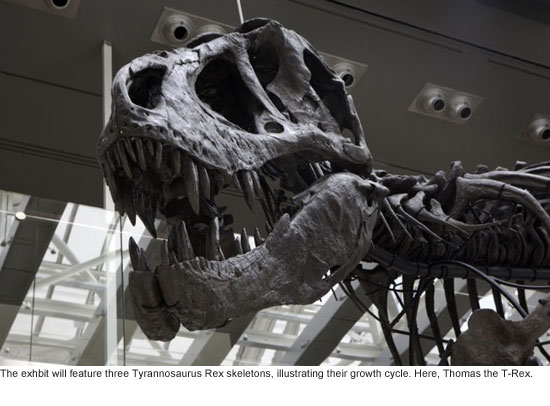
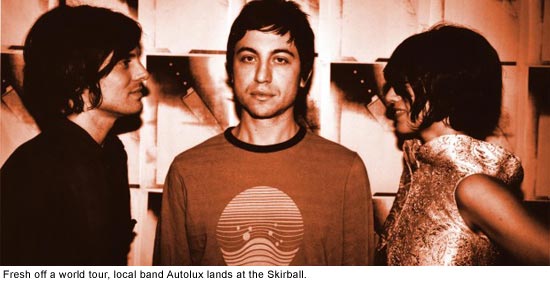





 Check for the latest closure information
Check for the latest closure information








